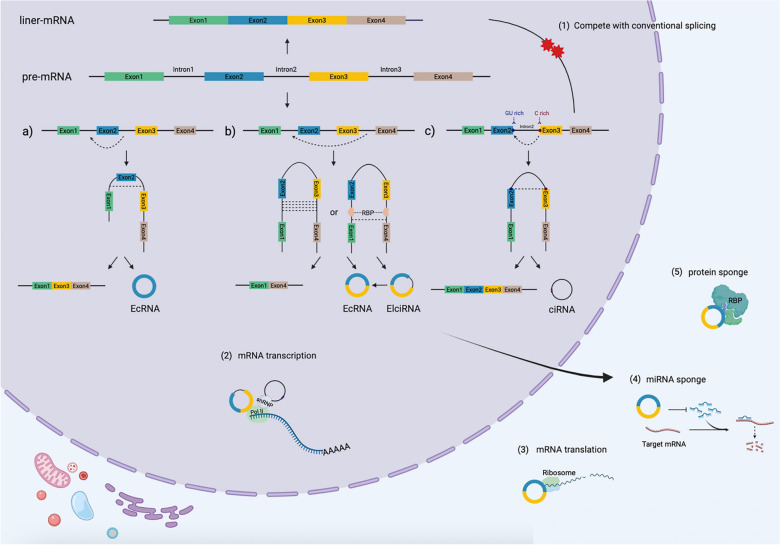Fig. 1.
Biogenesis mechanism and functions of circular RNAs (circRNAs). Biogenesis of circRNAs. CircRNAs are generated from the 5’ splice donor site and 3’ splice acceptor site of precursor mRNAs (pre-mRNAs), which are covalently linked in reverse order. Lariat-driven circularization and intron-pairing-driven circularization are common models of circRNA formation. Additionally, some RNA binding proteins (RBPs) might act as regulatory activators or inhibitors in circRNA biogenesis. In terms of type, circRNAs can be sorted into three main categories: a) exonic circRNAs (EcRNAs), b) exon–intron circRNAs (EIciRNAs), and c) circular intronic RNAs (ciRNAs). The functions of circRNAs are as follows: (1) to compete with conventional splicing, (2) to act as transcriptional modulators, (3) to serve as translation templates of proteins, (4) to act as competing endogenous RNAs (ceRNAs), and (5) to bind to proteins

